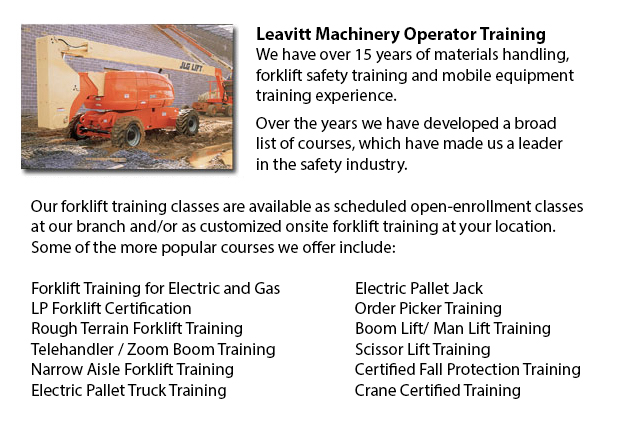
Boom Lift Certification Red Deer - Utilizing elevated work platforms allow for work and maintenance operations to be performed at elevated work heights which were otherwise not reachable. Boom Lift Certification Training educates workers regarding safely operating boom lifts and scissor lifts.
Despite the array in lift style, applications and site conditions, all lifts have the possibility for death or serious injury when operated unsafely. Electrocution, falls, crushed body parts, and tip-overs could be the terrible outcome of wrong operating procedures.
To be able to avoid aerial lift accidents, people have to be qualified to be able to train workers in the operation of the certain type of aerial lift they would be making use of. Controls should be easily accessible beside or in the platform of boom lifts made use of for carrying workers. Aerial lifts should not be be modified without the express permission of the manufacturer or other recognized entity. If you are renting a lift, make sure that it is correctly maintained. Before utilizing, controls and safety devices need to be inspected to be able to ensure they are correctly functioning.
It is vital to follow safe operating procedures to be able to avoid workplace accidents. Driving an aerial lift while the lift is extended must not be done, however, a few models are designed to be driven when the lift is extended. Always set brakes. Set outriggers, if available. Avoid slopes, but when needed utilize wheel chocks on slopes that do not go beyond the slope limits of the manufacturer. Follow load and weight limits of the manufacturer. When standing on the boom lift's platform, use full-body harnesses or a safety belt with a two-foot lanyard tied to the boom or basket. Fall protection is not necessary for scissor lifts that have guardrails. Do not sit or climb on guardrails.
The boom lift certification course provides instruction in the following areas: training and certification; safety guidelines in order to prevent a tip-over; checking the work area and travel path; slopes and surface conditions; stability factors; other tips for maintaining stability; weight capacity; leverage; testing control functions; pre-operational check; safe operating practices; mounting a vehicle; safe driving procedures; power lines and overhead obstacles; making use of harness and lanyards; PPE and fall protection; and avoid falling from platforms.
The successful trainee would know the following: authorization and training procedures; pre-operational inspection procedures; factors affecting the stability of scissor and boom lifts; how to avoid tip-overs; how to use the testing control functions; how to utilize PPE and strategies to prevent falls.
-
Fall Protection Ticket Red Deer
Fall Protection Ticket Red Deer - The number one reason of death in the construction industry come from fall-related incidents. There is more possibility for fall accidents depending upon the kinds of work being done in your workplace. Therefore, kno... More -
Overhead Crane Certification Red Deer
Overhead Crane Certification Red Deer - The overhead crane certification course is a course that is designed to help trainees, even if they have language or literacy limitations. The course comprises a practical hands-on training session and a classr... More -
Wheel and Track Loader Training in Red Deer
Lift trucks are obtainable in a variety of various models which have various load capacities. Nearly all typical lift trucks utilized in warehouse settings have load capacities of 1-5 tons. Bigger scale models are utilized for heavier loads, like for... More -
Heavy Equipment Certification Red Deer
Heavy Equipment Certification Red Deer - Heavy duty vehicles are big pieces of machines which are usually known as heavy equipment. It is a broad term that literally includes whatever big utility vehicle in the area of agricultural and forestry imple... More -
Heavy Equipment Operator Classes Red Deer
Heavy Equipment Operator Classes Red Deer - A person who has the correct training to be able to use a particular kind or piece of machine is referred to as an equipment operator. There are different ways that an equipment operator can become trained... More -
Forklift Training Programs Red Deer
Forklift Training Programs Red Deer - Are you searching for a job as a driver of a forklift? Our regulatory-compliant mobile equipment operator training offers instruction in kinds of lift trucks, pre-shift check, fuel types and dealing with fuels, a... More -
Crane Safety Training Red Deer
Crane Safety Training Red Deer - Both crane driver and their supervisors must know all the potential problems related to the operation of an overhead crane. All over North America, there is legislation which provides rules for the safe inspection, ma... More -
Aerial Lift Training Red Deer
Aerial Lift Training Red Deer - An aerial work platform is a mechanized access platform. This device provides access to otherwise inaccessible places for people or equipment. Likewise called an elevating work platform or aerial device, the machinery... More

Forklift Training Red Deer
TOLL FREE: 1-888-254-6157
Red Deer, Alberta
forklifttrainingreddeer.com
Email Us
About Us


